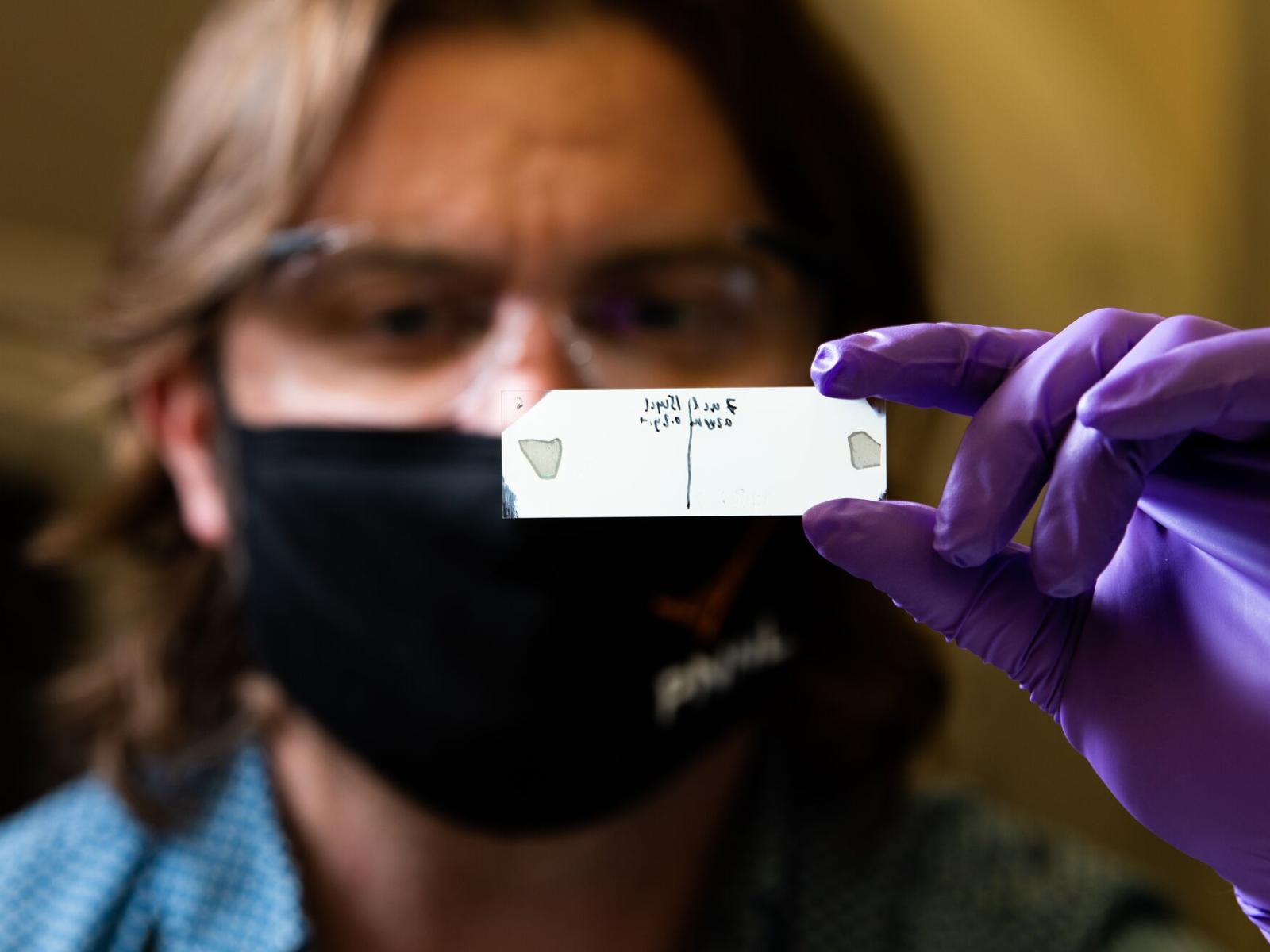Breathing New Life into Study of Lungs
PNNL scientists contribute to broad effort to explore human tissue

Scientists from Pacific Northwest National Laboratory published research in Frontiers in Molecular Biosciences, which explained the optimal method for obtaining the most accurate and representative view of the molecular landscape within human lungs. Their findings demonstrate a method that better prepares human lung tissue for study.
(Photo by Andrea Starr | Pacific Northwest National Laboratory)
Knowledge abounds about human lung structure, from the windpipe to the bronchi, to the tiny, balloon-shaped air sacs called alveoli. Less is known, however, about the cellular composition of the oxygen-fueling organ.
That’s changing thanks in part to Pacific Northwest National Laboratory (PNNL) scientists uncovering clues about the molecular structure of lungs. Their latest findings will likely clear a path for easier laboratory examination of this difficult-to-study organ.
In a Frontiers in Molecular Biosciences study published in November, PNNL researchers explained the optimal method for obtaining the most accurate and representative view of the molecular landscape in human lungs.
Lung samples need to be inflated to provide the best molecular representation during research, said Christopher Anderton, PNNL chemist and lead researcher of the study, titled, “An optimized approach and inflation media for obtaining complementary mass spectrometry-based omics data from human lung tissue.”
Anderton and a team that included several PNNL researchers concluded that agarose, a seaweed-based polymer like the agar in petri dishes, was the most suitable substance for preserving the structure of donated diseased and healthy lungs. “Other types of embedding media that were previously used to inflate lungs,” Anderton said, “were capable but ultimately failed because they were not compatible with one of the most important assays of our research: mass spectrometry."
“Our research was important because of the ongoing research on human lung tissue that takes place in EMSL,” said Anderton, leader of one of the Biogeochemical Transformations teams in PNNL’s Environmental Molecular Sciences Division and the Environmental Molecular Sciences Laboratory (EMSL) User Program. "Optimal preparation of lungs will ultimately contribute to better disease detection and treatment. Our research seeks to show you can identify key metabolites and lipids as well as changes in lung health as an early indicator of disease states.”
The advance is transformational in part because lung tissue study has been mostly limited to samples provided by mice. While useful, animal tissue is ultimately no substitute for human tissue.
PNNL researchers worked closely with colleagues at the University of Rochester Medical Center in New York, where donor registries are maintained, and tissue is prepared.
This research was supported by grants from the National Heart Lung Blood Institute of National Institute of Health (NIH). A portion of this research was performed at EMSL, a Department of Energy (DOE) Office of Science User Facility sponsored by the Biological and Environmental Research program.
Ongoing lung exploration at PNNL
The research is also part of PNNL’s participation in the LungMAP and HuBMAP projects. LungMAP includes investigators working together to develop a molecular atlas of the developing human lung. HuBMAP, or Human Biomolecular Atlas Program, is an NIH-funded program that characterizes the human body at single-cell resolution, and is coordinated with other efforts such as the Human Cell Atlas.
In a LungMAP-related study published last year, PNNL researchers led by biomedical scientist Geremy Clair, published the most comprehensive road map of the protein composition of human lungs. The study provided a clearer picture of healthy lung development.
Now, Clair and Anderton are recipients of HuBMAP grants supporting the study of cell development of healthy adult lungs. The study findings, published this November about the best practices for lung preparation for research, contributed to securing the HuBMAP grants, in collaboration with the University of Rochester, Clair said.
“Right now, we need to understand how multiple cell types that are next to each other in lungs are communicating with each other,” Clair said. “We don't know much about the lipids or about the metabolites in lungs that are changing.”
These are areas in which PNNL researchers, using EMSL’s mass spectrometry and samples imaging instruments, can provide answers, he said. “This grant is expanding the scope of research we are working on already,” Clair said.
Longtime exploration of human health
Human health studies at PNNL started decades ago as researchers explored the impacts of radiation and toxic materials at the Hanford Site, said PNNL biochemist Josh Adkins, associate division director in the Biological Sciences Division who leads the Integrative Omics group.
PNNL’s health-related research has evolved to making contributions to global health generally, such as with LungMAP and HuBMAP. Another prominent example—PNNL proteomics research published in 2009—led to a more efficient identification of blood plasma biomarkers, contributing to better diagnoses of Alzheimer’s Disease. More recently, the Integrative Omics group has helped with two COVID-related studies.
Only a handful of research institutions in the U.S. match PNNL’s staff expertise and laboratory instrumentation for mass spectrometry-based omics, Adkins said.
“We have superb analytical capabilities at the laboratory,” said Adkins, a Laboratory Fellow. “We've got some of the best in the world and an array of instrumentation that has few, but highly regarded peers.”
PNNL also has a history of being collaborative, he said. “That collaborative culture allows us to work with all sorts of consortia all over the country—such as LungMAP and HubMAP. On top of that, we also partner with individual academic institutions.”
Perhaps the best example of that one-to-one relationship is the partnership with the University of Rochester on the preparation of lung tissue, Adkins said.
Authors of the lung study from PNNL in addition to Anderton, Clair, and Adkins, include Jessica Lukowski, Heather Olson, Marija Velickovic, Juan Wang, Jennifer E. Kyle, Young-Mo Kim, Sarah M. Williams, Ying Zhu, and Charles Ansong.
Published: January 12, 2023